An Unconventional 2024 General Elections-Year Budget Reflects Modi’s Strong Confidence For The Third Term; Will He Won’t He?
Disclosing an austere budget amidst impending general elections has sparked discussions about Prime Minister Narendra Modi's unwavering confidence in securing a third consecutive term in office. This departure from traditional election-year tactics indicates the administration's focus on fiscal discipline and long-term developmental goals. Despite economic challenges and disparities in growth, Modi's track record and strategic appeals to the electorate have positioned the ruling Bharatiya Janata Party (BJP) as a formidable force, setting the stage for what analysts anticipate will be a decisive electoral outcome. With over 350 seats secured in the lower house during the 2019 elections, the BJP is now eyeing a formidable majority exceeding 400 seats, a feat that could significantly impact legislative reforms. Against the recent budget announcement and ongoing political manoeuvring, Prime Minister Narendra Modi's government appears poised to consolidate its agenda, characterized by assertive policies and ambitious promises.
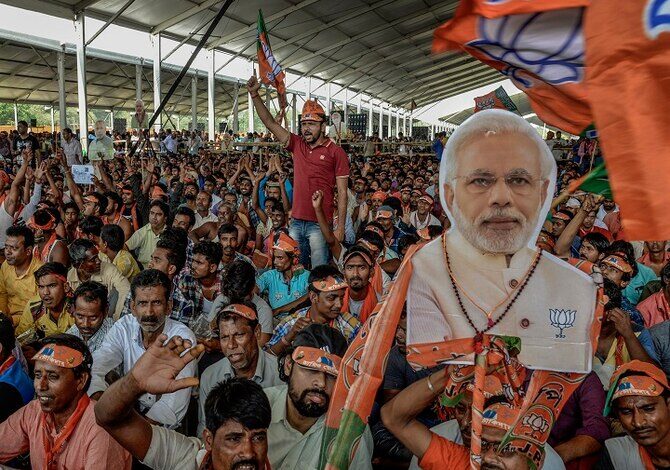
Despite the impending general elections, India’s finance minister unveiled a frugal budget last week, showcasing the administration’s unwavering belief in Prime Minister Narendra Modi’s potential for a third consecutive term in power.
In contrast to typical election-year tactics aimed at wooing voters, Nirmala Sitharaman’s interim budget prioritized fiscal discipline, notably reducing subsidies on essential commodities like food, fertilizers, and fuel.
During the interim budget preceding the last general election in 2019, Modi’s government rolled out populist measures such as direct cash assistance to impoverished farmers amounting to 750 billion rupees (then around $10.5 billion), broadened income tax exemptions, and introduced various incentives.
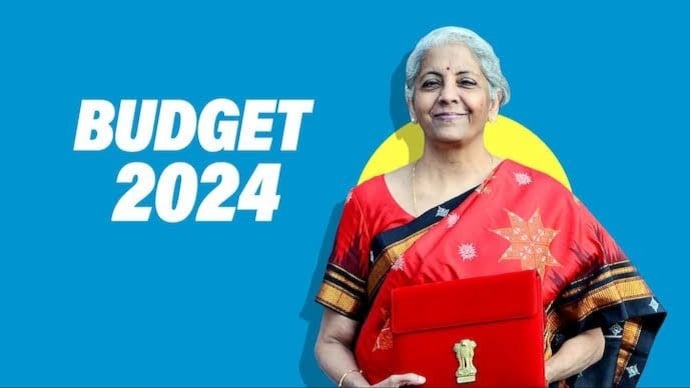
However, Sitharaman’s stance left little room for speculation about the administration’s anticipation of returning to power after the elections scheduled for May, affirming the government’s commitment to presenting a comprehensive plan for India’s development by 2047 in the subsequent full budget slated for July.
The ruling Bharatiya Janata Party (BJP) enters the election season with robust confidence, with Modi effectively addressing key components of a nationalist agenda tailored to resonate with the majority Hindu population and underpinned by the nation’s impressive economic growth.
Tariq Mansoor, a vice president of the party, expressed optimism, citing public trust in the prime minister and the favorable economic climate.
India’s economy has ascended to the world’s fifth-largest position since Modi assumed office a decade ago, registering remarkable growth rates among major global economies.
However, growth has predominantly favored urban areas, with rural regions, where over 60% of the population resides, experiencing slower progress.
Critics draw parallels to the imbalanced growth patterns preceding the BJP’s unexpected defeat in the 2004 general election.
Nevertheless, analysts overwhelmingly anticipate a decisive victory for Modi, attributing his high approval ratings, effective implementation of welfare initiatives benefiting millions, and symbolic gestures which resonated with the BJP’s Hindu voter base.
Amidst a fragmented opposition, Yashwant Deshmukh, the founder of polling agency CVoter Foundation, dismisses the likelihood of a repeat of the 2004 upset, barring unforeseen “Black Swan” events, emphasizing Modi’s ability to deliver on emotive issues pivotal to the BJP’s grassroots supporters and the broader Hindu nationalist constituency.
While CVoter conducts ongoing surveys, Deshmukh stresses the prevailing trend, indicating a comfortable majority for the BJP in the forthcoming election, emphasizing not only economic factors but also the resonance of emotive issues central to the party’s ideology and voter base.
The BJP-led National Democratic Alliance coalition secured over 350 out of the 543 directly elected seats in the lower house of parliament during the 2019 election.

According to Mansoor of the BJP, the alliance is aiming for a tally surpassing 400 seats this time, which would grant them a commanding two-thirds majority in the legislature, enabling constitutional amendments.
Harsh Mander, a human rights activist and political commentator, interpreted the budget as reflective of the government’s mindset. He noted that typically, a pre-election budget would include last-minute promises, but the absence of such gestures indicates the government’s confidence in its policies, particularly those promoting Hindu supremacy, overriding any existing discontent.
Modi’s administration has fulfilled two significant BJP pledges:
- The construction of a temple at the Ayodhya site considered the birthplace of the deity Ram.
- The revocation of Jammu and Kashmir’s autonomy.
The recent inauguration of the Ram Temple, overseen by Modi, triggered nationwide celebrations.
While the main opposition Congress party criticizes the government for failing to double farmers’ incomes by 2022 and generate millions of jobs annually, its coalition has suffered from the defection of a prominent regional leader to the BJP alliance.
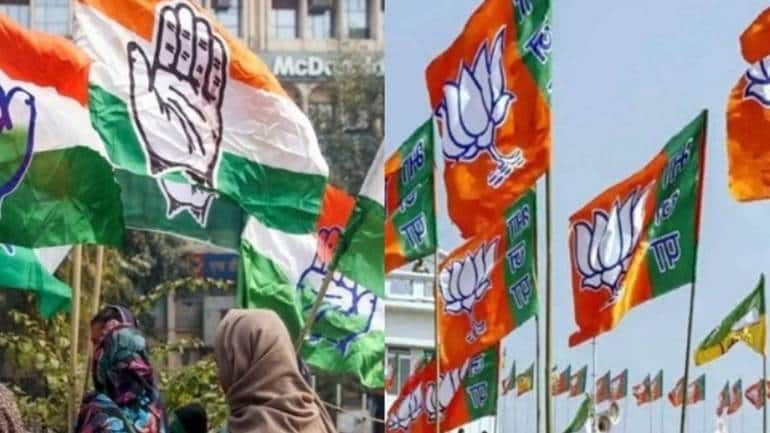
Congress has yet to devise an effective response to Modi’s assertive pro-Hindu agenda.
Elara Capital analysts observed that the budget deliberately avoided major announcements, signaling confidence in securing re-election.
Modi himself exudes confidence, expressing aspirations for India to become the world’s third-largest economy during his anticipated third term, a sentiment greeted with applause during a recent speech to business leaders.
What’s the Likelihood?
As indicated by a recent poll conducted by India Today-CVoter Mood of the Nation, Prime Minister Narendra Modi may very well secure a third consecutive term in 2024, despite the presence of the INDIA alliance.
Projections suggest that the BJP-led NDA is set to clinch 306 seats with a 43 percent vote share, while the INDIA alliance is anticipated to gather 193 seats with a 41 percent vote share.
Specifically, the BJP is expected to surpass the majority threshold independently, securing 287 seats—a slight decrease from its 303-seat haul in the 2019 Lok Sabha elections. Notably, in 2019, the NDA secured a total of 333 seats.
Forecasts indicate a marginal increase in the BJP’s vote share by 2 percent, reaching nearly 39 percent. Similarly, the Congress is projected to witness a 2 percent uptick in its vote share, reaching 22 percent, yet the gap between the two parties remains substantial at approximately 17 percent.
The combined vote share of other parties is expected to decrease from 43 percent to 39 percent. The Congress is predicted to bolster its seat count by 22, reaching 74 seats—the highest since 2014—while other parties are likely to secure 182 seats.
The INDIA bloc is anticipated to make gains in West Bengal and Bihar. In West Bengal, the alliance is expected to secure 24 seats out of 42, while the NDA is projected to claim 18 seats—a figure identical to the saffron party’s 2019 performance.
Similarly, in Bihar, the INDIA alliance is likely to secure 26 seats, with the NDA securing 14. In the previous election, the NDA swept the state by securing 39 out of 40 seats.
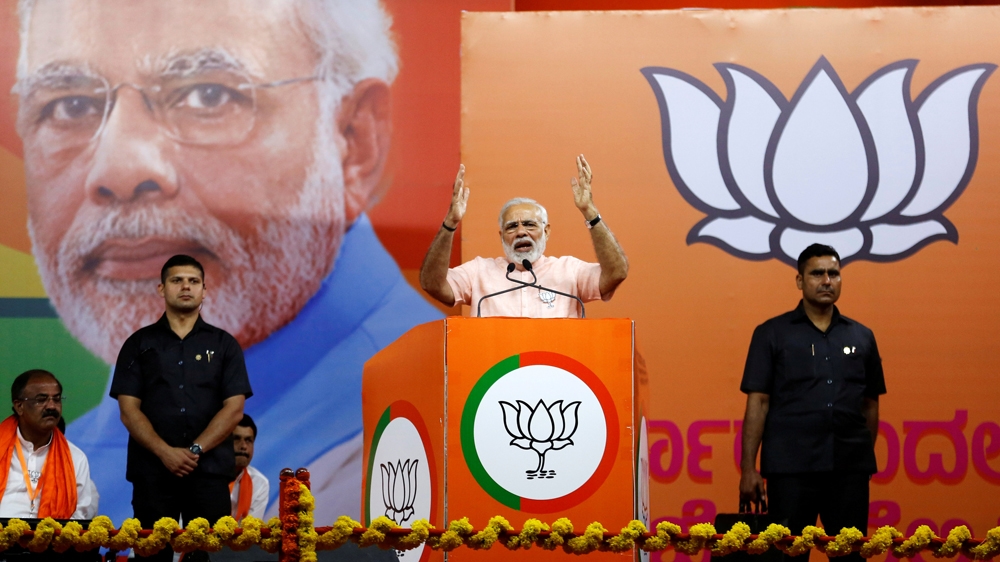
The poll suggests that the BJP may replicate its 2014 performance in Uttar Pradesh, securing 72 out of 80 seats with nearly 49 percent of the vote share.
In contrast, the INDIA alliance, which includes the Samajwadi Party, is projected to secure only 8 seats with a 38 percent vote share.
A majority of respondents expressed skepticism about the opposition alliance’s ability to unseat the BJP. According to the survey, 54 percent of respondents believed that the INDIA bloc would not succeed in defeating the BJP, while 33 percent were optimistic about its prospects.
The opposition parties, having convened two meetings to strategize for the upcoming parliamentary elections, recently rebranded their alliance as INDIA (Indian National Developmental Inclusive Alliance), replacing the previous UPA (United Progressive Alliance) led by the Congress.
The survey indicates that 39 percent of respondents believe the name change could attract votes for the INDIA alliance, while 30 percent remain unconvinced.
Among potential leaders of the alliance from the opposition, Rahul Gandhi emerged as the top choice, followed by West Bengal Chief Minister Mamata Banerjee and her Delhi counterpart Arvind Kejriwal.
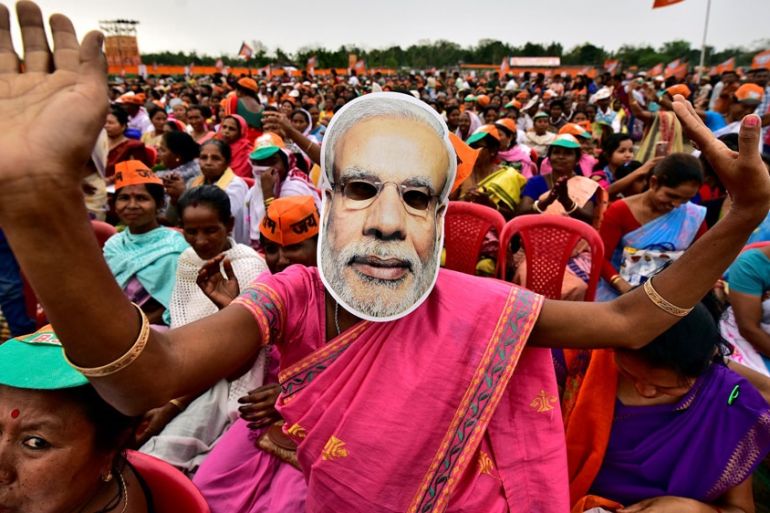
The Last Bit, the findings of the India Today-CVoter Mood of the Nation poll paint a picture of Prime Minister Narendra Modi’s continued dominance in Indian politics, with projections indicating a high likelihood of securing a third consecutive term in the 2024 elections.
Despite a slight decline in seat numbers for the BJP-led NDA compared to the 2019 elections, Modi’s party is balanced to maintain a significant majority in the lower house of parliament.
The opposition alliance, represented by the INDIA bloc, faces an uphill battle in challenging the BJP’s supremacy, with limited prospects of unseating the incumbent government.
The survey emphasises the enduring popularity of Modi and the BJP, driven by a combination of effective governance, strategic alliances, and a robust electoral machinery.
As India prepares for another electoral showdown, the stage appears set for Modi to extend his tenure and continue shaping the nation’s political scenery for the foreseeable future.




